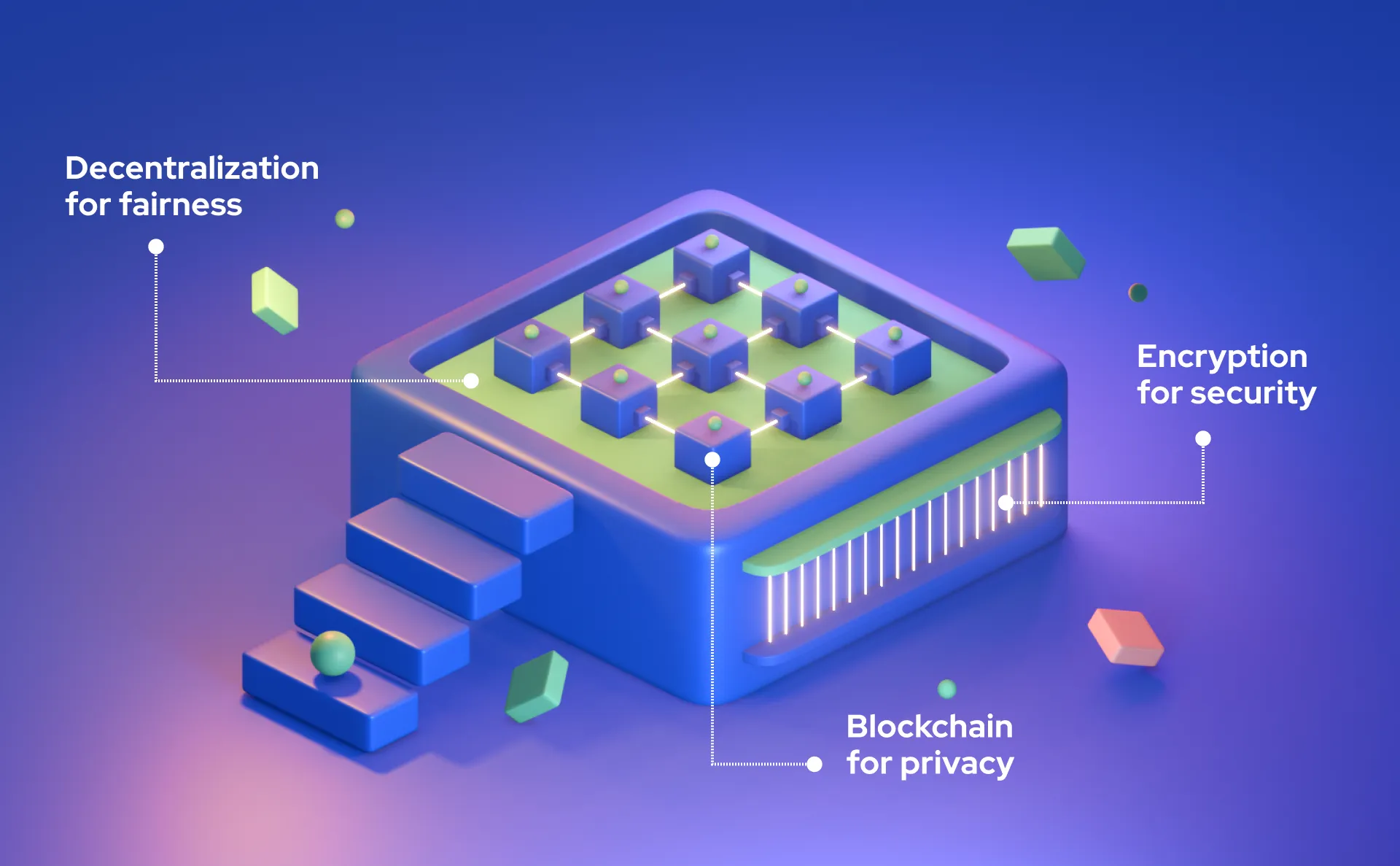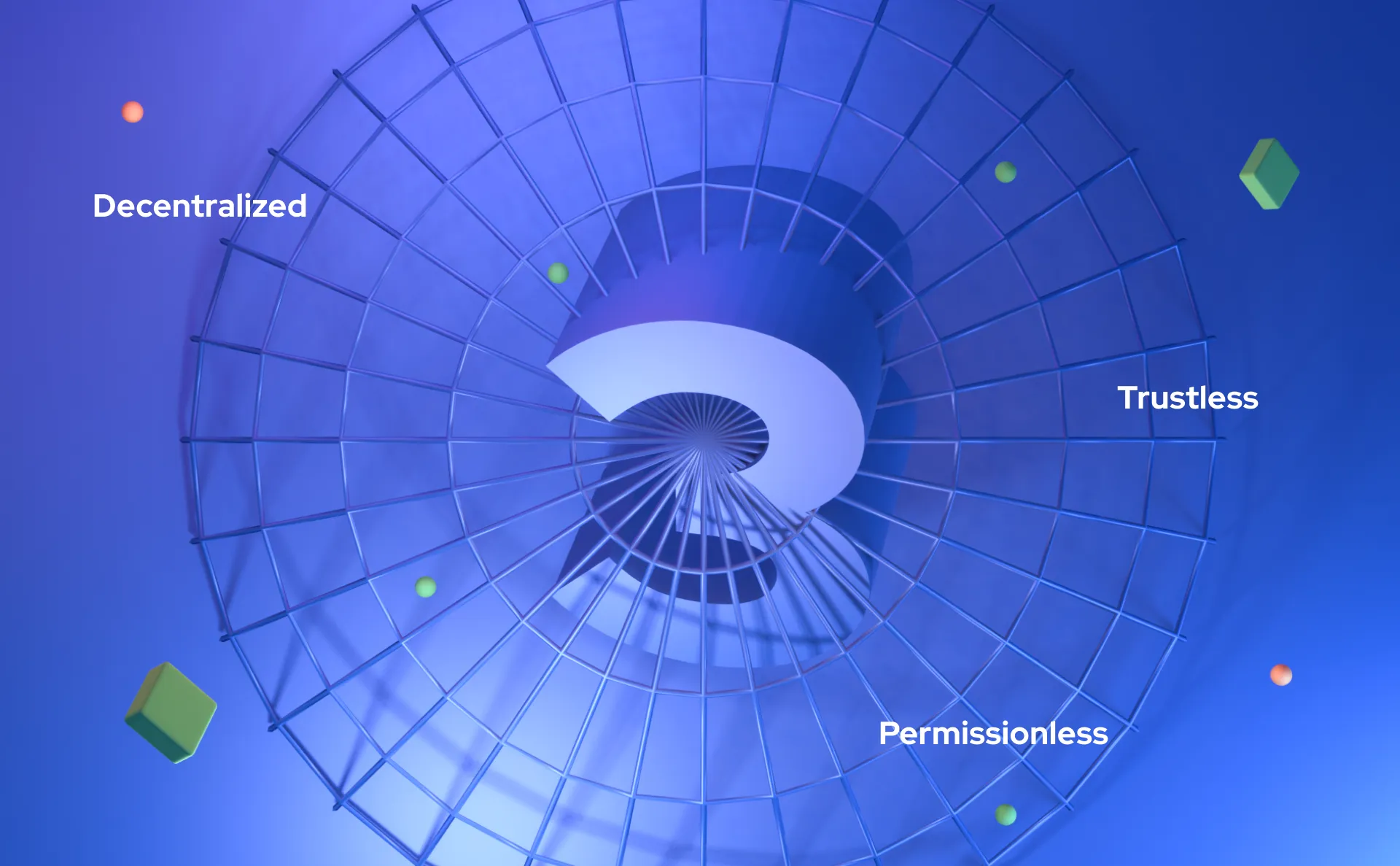
Every technology goes through generational cycles, and the internet is no exception. When the global community crosses a critical threshold of upgrades, a new generation starts – which can often confuse the marketplace. Most Web3 features that existed in the first generation are still here, only with additional layers. This is exactly what happened when Web1 (read-only static) morphed into Web2 (read-write interactive).
What is Web3, and how do companies use it today? Read this article to find out about the real-life examples and the future of this powerful, transformative trend.
In the late 1990s, the internet was just beginning to reach a mass audience. The World Wide Web1 era was highly decentralized for reasons like low bandwidth that restricted media-rich websites and underdeveloped infrastructure.
Practically anyone could learn HTML or use a template to deploy a website since they were developed server-side and often hosted for free on ISP-provided servers. Web1 was static, simple, and non-interactive.
Over time, telecommunications companies built broadband infrastructure and inspired entrepreneurs to build new ventures that deepened the experience and economics of the internet. In the late 00s, companies such as YouTube and Netflix scaled when they managed to deliver streamed content to the mass market. More complex technology stacks appeared as the internet demonstrated it was a new TV, radio, and publishing cWeb 2.0 merged client-side programming languages like HTML, CSS, JavaScript, and Ajax with server-side programming languages such as PHP, Ruby, and Java. The introduction of server-side web frameworks such as Django, Ruby on Rails, Laravel, and others has allowed developers to scale up the development of large websites easily. Web developers often customize their stacks, choosing from MEAN (MongoDB, Express.js, AngularJS/Angular, and Node.js) or MERN (MongoDB, Express.js, React, and Node.js). Such platforms can be seen as Vimeo and YouTube, providing increased user interaction and easy content contribution enabled by client-side web stacks.
Web 2.0 was based on raising capital and traditional business management, leading to an increasing centralization. Additional stacks made web content both work- and hosting-intensive, and no small business could pay for immense data traffic delivered through video sharing and social media platforms.
Moreover, the network effect appeared: even if someone cloned Twitter, the value of Twitter is locked in its software but rather in the number of people using it. This is best demonstrated by companies like Google, which went from a search engine start-up to a go-to platform for everything: ad integration and monetization, news aggregation, video-sharing, payment rails, AI, robotics, and smartphones.
This has created an environment where only a handful of tightly-regulated nodes exist, making it convenient to interact with the world and allowing companies to change their policies whenever they like.
The concentration of power can lead to tricky results. When the Federal Reserve bailed out commercial banks during the 2008–09 recession, protests erupted against this use of taxpayer funding. A year after that economic downturn, Bitcoin emerged as peer-to-peer digital money with its genesis block referencing bank bailouts. Bitcoin’s blockchain technology also laid the groundwork for Web3.
If money could be made both digital and decentralized, it could also be easily integrated into the internet. Web3 mirrors Bitcoin as it provides users with a permissionless, trustless, and decentralized way of generating, distributing, and owning content.

The term Web3 is often used to refer to the idea of a better internet. At its core, Web3 leverages blockchains, cryptocurrencies, and non-fungible tokens (NFTs) to give ownership back to users in the form of read-write access.
Web3 is:
– Decentralized – instead of the internet being controlled and owned by centralized entities, ownership is distributed among its builders and users.
– Permissionless – everyone gets equal access to Web3, and no one is excluded.
– Trustless – using incentives and economic mechanisms instead of counting on trusted third parties.
Moreover, Web3 uses cryptocurrency for spending and sending money online instead of relying on the outdated infrastructure of banks and payment processors.
The Web3 movement aims to decentralize the internet by using distributed computing (the use of many computers) to store information rather than storing it in one place on a server. Instead of using giants such as Google, data will be freely shared and stored in many locations by DAOs (Decentralized Autonomous Organizations). DAOs are groups built for one purpose and run by their members as a community – they rely on each member within the DAO to work towards a common goal.
Blockchain enables decentralized networks in which the distribution of digital assets is managed through a peer-to-peer network. It’s a transparent and publicly accessible data system that allows everyone to see what goes on in it.
One example of people using blockchain includes registering digital assets (non-fungible tokens) and tokens (cryptocurrencies), allowing people to transfer digital goods without knowing who the other party is. Personal identity doesn’t get revealed unless users share their identity by tying their blockchain wallets to their personal information.
Encryption is another key aspect of Web3. It ensures that data can only be accessed according to the terms of a contract, keeping it private from people who shouldn’t have access. While encryption is already used to protect our online data, as the internet evolves we will use it to ensure that data can be publicly transparent and privately owned at the same time. For instance, encryption will keep your information private as you transfer assets or ownership rights on the blockchain.

Blockchains – The base of the Web3 stack is the blockchain network. This includes the base level of the blockchain (its main structure), such as Ethereum, and the level above it consisting of networks built on top of layer 1 blockchains.
Decentralized applications are among the fastest-growing sectors in the blockchain space. DApps are software programs developed on an open-source blockchain ecosystem. They rely on a peer-to-peer network that runs on a native cryptocurrency token and facilitates transactions between users without the oversight of a central authority. Over the past few years, we have seen DApps introduced in various fields, including finance, online games, trading exchanges, and whatnot.
Examples include MakerDAO, an Ethereum-based platform that lets users lock ETH tokens as collateral and receive DAI tokens for that. DAI is a stablecoin with its value pegged to the US Dollar. Another example is Uniswap, a platform that allows users to swap and trade ERC-20 tokens. Aave is one of the most popular DApps in the DeFi world. It’s an open-sourced liquidity protocol providing users with complete transparency. It opens the door to lending, borrowing, staking, and earning interest on deposits.
A decentralized platform is a peer-to-peer marketplace that connects cryptocurrency buyers and sellers. The main difference between decentralized platforms and their centralized counterparts is that users maintain full control of their private keys on a decentralized exchange.
An example of that is 1 Inch, which started as an Ethereum-based decentralized exchange, but over the past two years, it has evolved into a multi-network trading DEX that allows users to leverage the liquidity of hundreds of other decentralized exchanges based on different blockchains. A good example is Uniswap, the first and the most forked DEX through different blockchains.
Non-fungible tokens (NFTs) are a form of unique digital assets that can take the form of in-game items, memes, or GIFs. Players own the NFTs they earn in games and can trade them or later sell them when the items reach rarity and become more valuable. Non-fungible tokens came to the mainstream with the first game built on them: CryptoKitties.
Many other businesses and developers have capitalized on the idea of leveraging tokens for financial incentives, utilizing non-fungible tokens in various ways. The evolution of non-fungible tokens has also developed them as important assets for the metaverse — a virtual world in which anything can be bought or sold.
NFTs open a world of potential use cases to many different groups. For example, music artists can use NFTs to tokenize songs and albums or sell digital merchandise. In ticket sales, NFTs can remove the third-party ticket sales between the artists and fans and reduce scams due to transparency and authenticity verification provided by NFTs.

Blockchain technology is expected to be used in almost every sector in the next decade, from retail and e-commerce to media and entertainment. Web3 depends heavily on blockchain but not necessarily on cryptocurrencies. According to numerous research studies, Web3 tech will reach its adoption tipping point soon, and industries from aircraft maintenance to food safety will tokenize their applications. Blockchain has been a proven technology that ensured the security of crypto assets and non-fungible tokens (NFTs) to the next level – and now, it’s ready to ultimately transform the next generation of web technologies in other sectors.
If you found this article interesting and would like to deepen your knowledge about Web 3.0, read our article about security in Web3.
